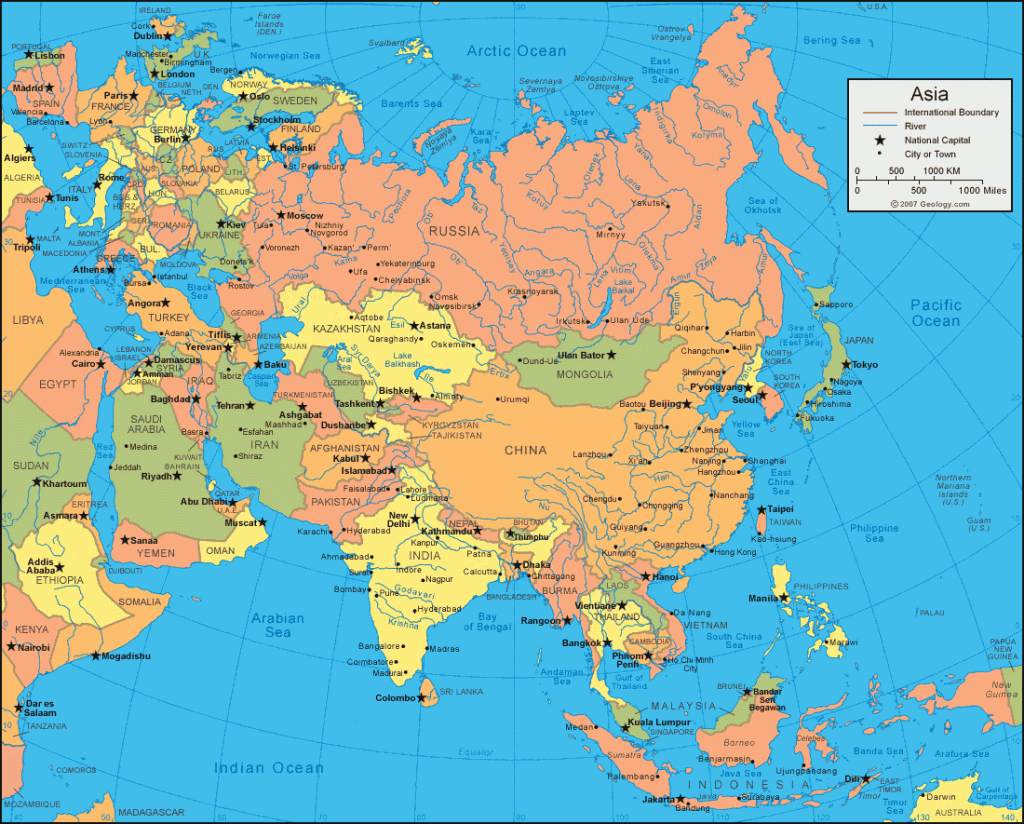Asia is the world’s biggest region, and some of its countries are the world’s biggest. Each has its own beautiful scenery and rich cultural tapestries. This topic, “The Top Ten Largest Countries in Asia (Size),” goes into detail about the ten largest countries in Asia by land area. It’s interesting to see how different their landscapes are. These countries cover millions of square kilometres, from Russia’s huge Siberian wilderness to China’s vast deserts, mountains, and lively towns. China is the biggest country in both Asia and the world. The continent has a huge range of landscapes, from India’s busy towns and lush coastlines to Kazakhstan’s endless steppes and Saudi Arabia’s dry deserts.
This look into each country’s size, unique geography, and famous sites makes it an interesting read for people who are interested in geography, travelling, or just plain curious. By showing how big these Asian giants are, the topic brings out the diversity of the continent and its important place in world events. This content was created to keep readers interested and improve its search engine visibility. It encourages study of the huge countries that make up Asia’s identity, pique interest in their natural wonders and cultural significance.
The Top Ten Largest Countries In Asia (Size)
10. Turkey (783,562 km²)
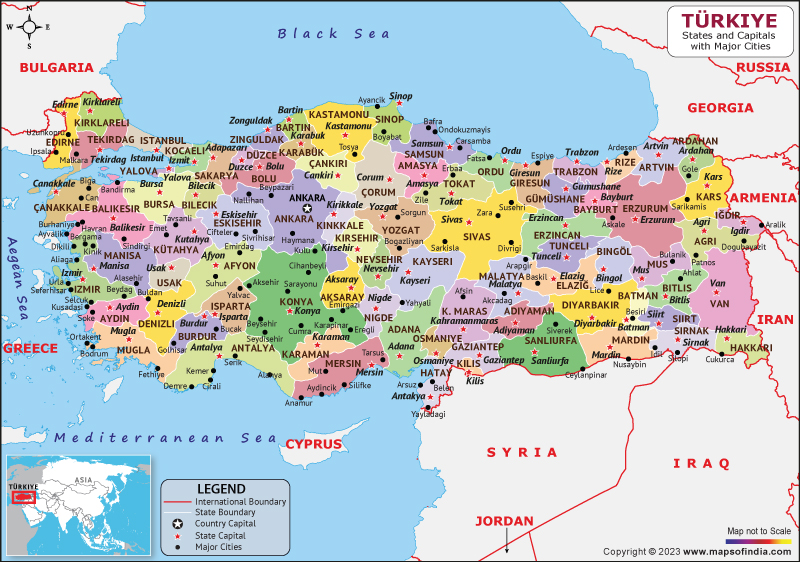
Turkey, straddling Western Asia and Southeastern Europe, covers 783,562 km², with 97% in Asia (Anatolia) and 3% in Europe (Eastern Thrace). Its strategic position along the Turkish Straits and Sea of Marmara connects two continents, offering a blend of coastal plains, high plateaus, and rugged mountains like the Köroğlu, Pontic, and Taurus ranges. Mount Ararat, soaring to 5,137 meters, marks the highest peak, while Lake Van, the largest lake, adds to its scenic allure.
The Lakes Region, including Lake Beyşehir and Lake Eğirdir, contrasts with seismic zones along the North Anatolian and East Anatolian Faults, where 70% of the land faces earthquake risks. Seven regions—Marmara, Aegean, Central Anatolia, Black Sea, Eastern Anatolia, Southeastern Anatolia, and Mediterranean—showcase diverse climates from Mediterranean shores to snowy highlands. Landmarks like Göbekli Tepe, a 9600 BC archaeological marvel predating Stonehenge, and the iconic Hagia Sophia in Istanbul, built in 537 AD, draw global visitors. Other highlights include Troy, the Lycian Way hiking trail, Topkapı Palace, and Anıtkabir, Atatürk’s mausoleum, making Turkey a treasure trove for history and geography buffs seeking Asian landmarks.
9. Pakistan (881,913 km²)
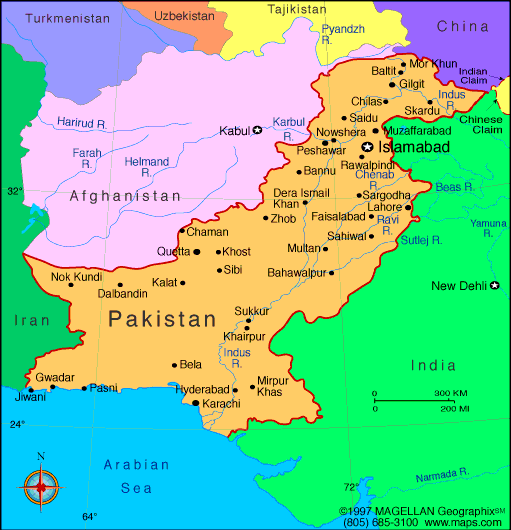
Pakistan, spanning 881,913 km², ranks as the 9th largest country in Asia, blending towering peaks, vast plains, and arid plateaus. Its northern highlands boast the Karakoram, Hindu Kush, and Pamir ranges, home to K2 (8,611 m), the world’s second-highest peak, and Nanga Parbat (8,126 m). The Indus River, stretching 1,609 km, nourishes the fertile Punjab and Sindh plains, while the Balochistan Plateau and eastern Thar Desert add stark beauty. A 1,046 km coastline along the Arabian Sea borders Afghanistan, China, India, and Iran, with Oman nearby across the Gulf of Oman.
The climate shifts from tropical to arid, with monsoons shaping the summer rainy season. Landmarks like Mohenjo-daro and Harappa, remnants of the 8,500-year-old Indus Valley Civilization, join UNESCO sites like Makli Necropolis and Lahore Fort. The Badshahi Mosque, Faisal Mosque, and Karakoram Highway offer cultural and scenic splendor, while natural wonders like Shangrila Lake and Hunza Valley captivate adventurers. Pakistan’s diverse geography and historical depth make it a key destination for exploring Asian nations, appealing to those fascinated by ancient civilizations and rugged landscapes.
8. Indonesia (1,904,569 km²)
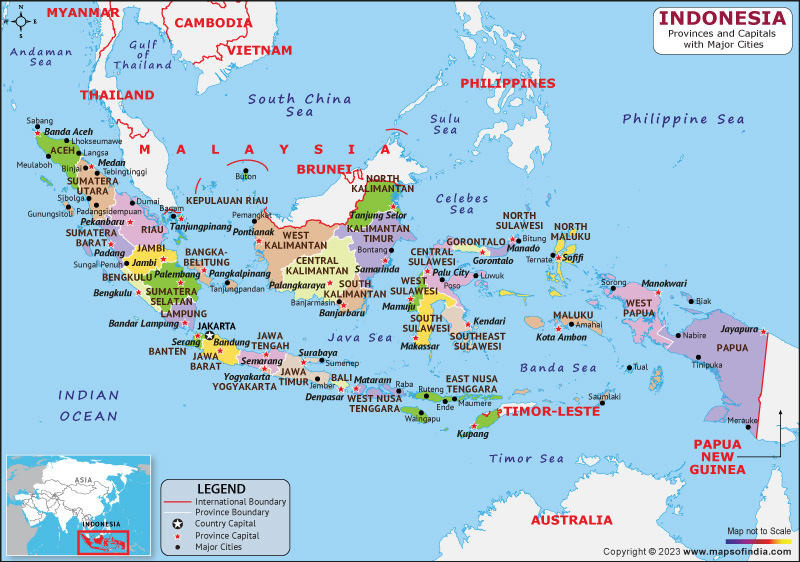
Indonesia, the world’s largest archipelagic state, covers 1,904,569 km² across over 17,000 islands, with 922 permanently inhabited. Stretching 5,120 km east to west, its major islands—Sumatra, Java, Borneo, Sulawesi, and New Guinea—feature volcanic peaks like Puncak Jaya (4,884 m) and lush rainforests covering 48.8% of the land. Situated on the Pacific Ring of Fire, it hosts 400 volcanoes, 130 active, shaping its dramatic terrain. Lake Toba, a 1,145 km² volcanic lake, is a standout feature.
Landmarks like Borobudur, the largest Buddhist temple, and Prambanan draw global visitors, while Komodo National Park, home to the Komodo dragon, and Raja Ampat’s coral reefs highlight biodiversity. Gunung Padang, a megalithic site, and Mount Bromo’s active crater add intrigue. UNESCO sites like the Cosmological Axis of Yogyakarta and Bunaken National Park underscore Indonesia’s cultural and natural wealth. Its equatorial climate and island diversity make it a top pick for travelers seeking Southeast Asian geography, boosting its appeal for those searching for unique Asian landmarks and adventure destinations.
7. Mongolia (1,564,116 km²)

Mongolia, a landlocked gem covering 1,564,116 km², ranks 7th among Asia’s largest countries. Its vast steppes, Gobi Desert in the south, and northern mountains like the Altai define its rugged beauty. Khüiten Peak (4,374 m) stands as the highest point, while the Uvs Lake basin, a UNESCO World Heritage Site shared with Russia, adds ecological significance. With 11.2% forest cover, the Mongolian Plateau offers clear skies, earning the nickname “land of the blue sky.” The capital, Ulaanbaatar, houses nearly half the population, blending modernity with nomadic traditions.
Landmarks like Erdene Zuu Monastery (1585), Amarbayasgalant Monastery, and the Genghis Khan monument near Gorkhi-Terelj National Park reflect its historical depth. Khoit Tsenkher Cave’s 20,000-year-old paintings and Karakorum, the ancient capital, captivate history lovers. The Gobi Desert’s Khongoryn Els dunes and Khentii Mountains, near Genghis Khan’s birthplace, draw adventurers. Mongolia’s vast, untouched landscapes and cultural heritage make it a must-visit for those exploring Asian geography, offering unique insights into nomadic life and natural wonders that resonate with searchers of top Asian nations.
6. Iran (1,648,195 km²)
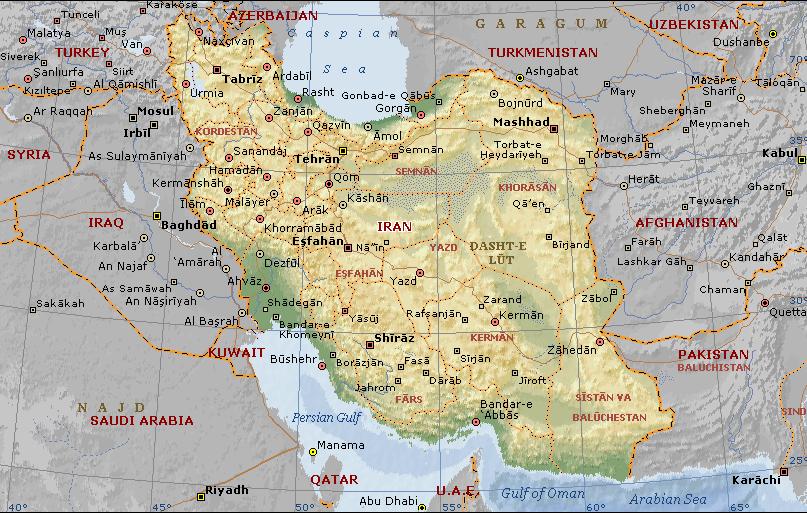
Iran, spanning 1,648,195 km², ranks 6th in Asia and 2nd in West Asia, known for its Iranian Plateau, rugged Zagros and Alborz mountains, and Mount Damavand (5,610 m), Asia’s highest volcano. Caspian Hyrcanian forests in the north contrast with the Kavir and Lut Deserts, the latter recording 70.7°C in 2005. One-third of its land suits farming, though only 12% is cultivated, with fertile western soils and grazing rangelands. Its 2,440 km coastline along the Persian Gulf and Caspian Sea supports fisheries.
Landmarks include Persepolis, a 6th-century BC Achaemenid capital, and 28 UNESCO sites like Naghsh-e Jahan Square and Yazd, ranking Iran 10th globally for heritage. Chogha Zanbil’s ziggurat, Qeshm Island’s salt caves, and Isfahan’s mosques draw tourists, while Dizin, a top ski resort, adds modern appeal. Iran’s blend of ancient history, diverse terrain, and cultural richness makes it a standout for those researching Asian geography, with its landmarks and natural beauty driving interest among travelers seeking top Asian destinations.
5. Saudi Arabia (2,149,690 km²)

Saudi Arabia, covering 2,149,690 km², occupies 80% of the Arabian Peninsula, ranking 5th in Asia. The Arabian Desert, including the Rub’ al Khali (647,500 km², world’s largest sand desert), dominates, with no permanent rivers but numerous wadis and 1,300 islands. Jabal Ferwa (3,002 m) is the highest peak, and over 2,000 dormant volcanoes shape its lava fields. The climate ranges from 45°C summers to rare Tabuk snowfalls. Landmarks include Mecca and Medina, Islam’s holiest cities, and Hegra (UNESCO), a Nabatean site with 131 rock-cut tombs.
Riyadh’s National Museum, Al-Hasa oasis with 30 million palms, and Dumat al-Jandal (3,000 years old) highlight its heritage. Al-Natah, a 4,000-year-old city, and Quba Mosque add historical depth. Urban centers like Jeddah and Riyadh, where 85% of the population lives, blend tradition with modernity. Saudi Arabia’s vast deserts, sacred sites, and archaeological treasures make it a prime destination for those exploring Asian landmarks, appealing to searchers of cultural and natural wonders in top Asian nations.
4. Kazakhstan (2,724,900 km²)

Kazakhstan, the world’s largest landlocked country, spans 2,724,900 km², ranking 4th in Asia. Stretching from the Caspian Sea to the Altay Mountains, its Kazakh Steppe (804,500 km²) is the world’s largest dry steppe. Agricultural land covers 846,000 km², with Lake Balkhash and rivers like Irtysh and Syr Darya shaping its terrain. Its climate is extreme, with hot summers and cold winters. Landmarks include Charyn Canyon (80 km long), Baikonur Cosmodrome, and Astana’s Bayterek Tower. UNESCO sites like the Mausoleum of Khoja Ahmed Yasawi and Tamgaly’s petroglyphs reflect cultural depth, while Almaty’s Ascension Cathedral and Bigach crater (8 km wide) add diversity. Kazakhstan’s vast steppes, modern cities, and historical sites make it a compelling stop for geography enthusiasts exploring Asian nations, with its unique blend of natural beauty and cultural heritage driving search interest for top Asian destinations and landmarks.
3. India (3,287,263 km²)

India, ranking 3rd in Asia with 3,287,263 km², features a 7,517 km coastline along the Indian Ocean, Arabian Sea, and Bay of Bengal. The Himalayas, Indo-Gangetic Plain, Thar Desert, and Deccan Plateau create diverse landscapes, with rivers like the Ganges and Brahmaputra vital to its ecology. Landmarks include the Taj Mahal (UNESCO), Ajanta and Ellora Caves, Sanchi Stupa, and Varanasi’s spiritual ghats. The Sundarbans delta, Lakshadweep atolls, and Andaman and Nicobar Islands add natural splendor. With 42 UNESCO sites, India’s cultural wealth shines, from Hampi’s ruins to Jaipur’s pink city. Its biodiversity, from Himalayan peaks to coastal mangroves, captivates travelers. India’s vast geography and iconic landmarks make it a top search for Asian geography, drawing those seeking cultural heritage and natural wonders in one of Asia’s largest countries, ensuring high engagement for travel and history enthusiasts.
2. China (9,596,961 km²)
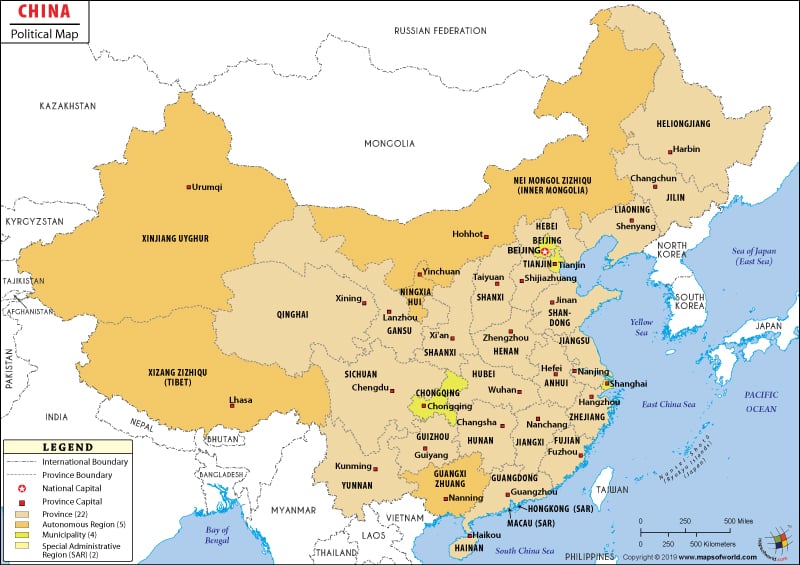
China, Asia’s 2nd largest country at 9,596,961 km², spans deserts like the Gobi and Taklamakan, the Himalayas with Mount Everest (8,848 m), and rivers like the Yangtze and Yellow. Its 14,500 km coastline borders 14 countries. Landmarks include the Great Wall, Forbidden City, and 59 UNESCO sites, alongside modern marvels like the Three Gorges Dam and Shanghai maglev (431 km/h). Natural sites like Zhangjiajie’s sandstone peaks and Jiuzhaigou’s lakes draw millions. China’s blend of ancient history, vast terrain, and modern innovation makes it a focal point for Asian geography searches, appealing to those exploring top Asian nations, with its cultural and natural landmarks ensuring strong SEO traction for travel and history content.
1. Russia (17,098,246 km²)
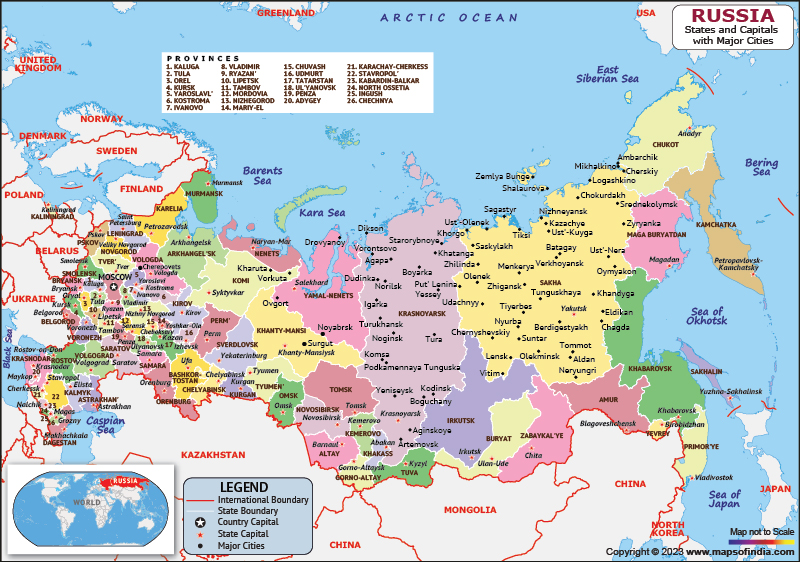
Russia, the world’s largest country at 17,098,246 km², dominates Asia with its Siberian tundra, Ural and Caucasus Mountains, and Lake Baikal, the deepest lake. Its 37,653 km coastline spans three oceans, with over 100,000 rivers. Landmarks include the Kremlin, Saint Basil’s Cathedral, and 32 UNESCO sites like the Golden Ring and Kizhi Pogost. The Trans-Siberian Railway and Peterhof Palace add grandeur, while Denisova Cave and the Siberian Ice Maiden offer archaeological intrigue. Russia’s vast landscapes and cultural treasures make it a top search for Asian geography, captivating those exploring the largest countries in Asia with its unmatched scale and historical depth, driving traffic for travel and geography enthusiasts.

